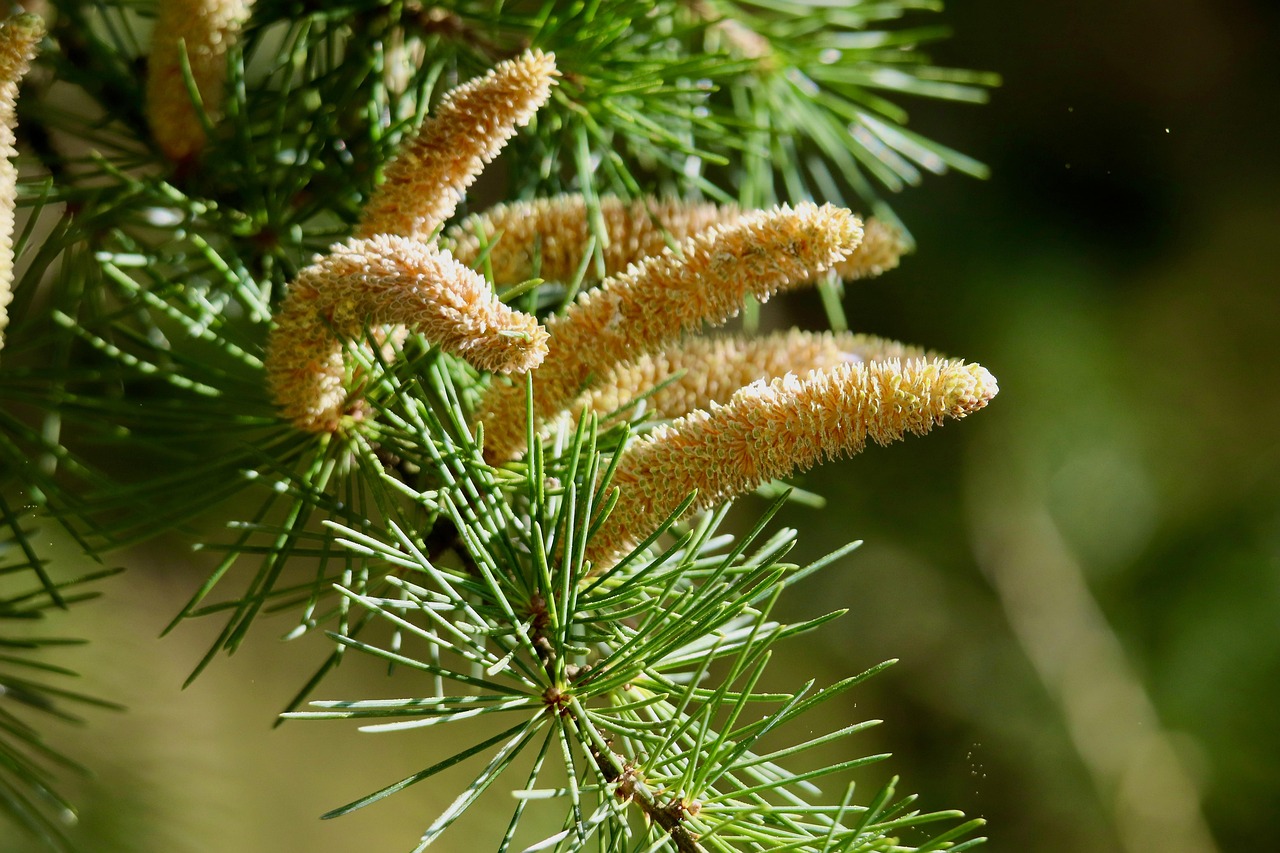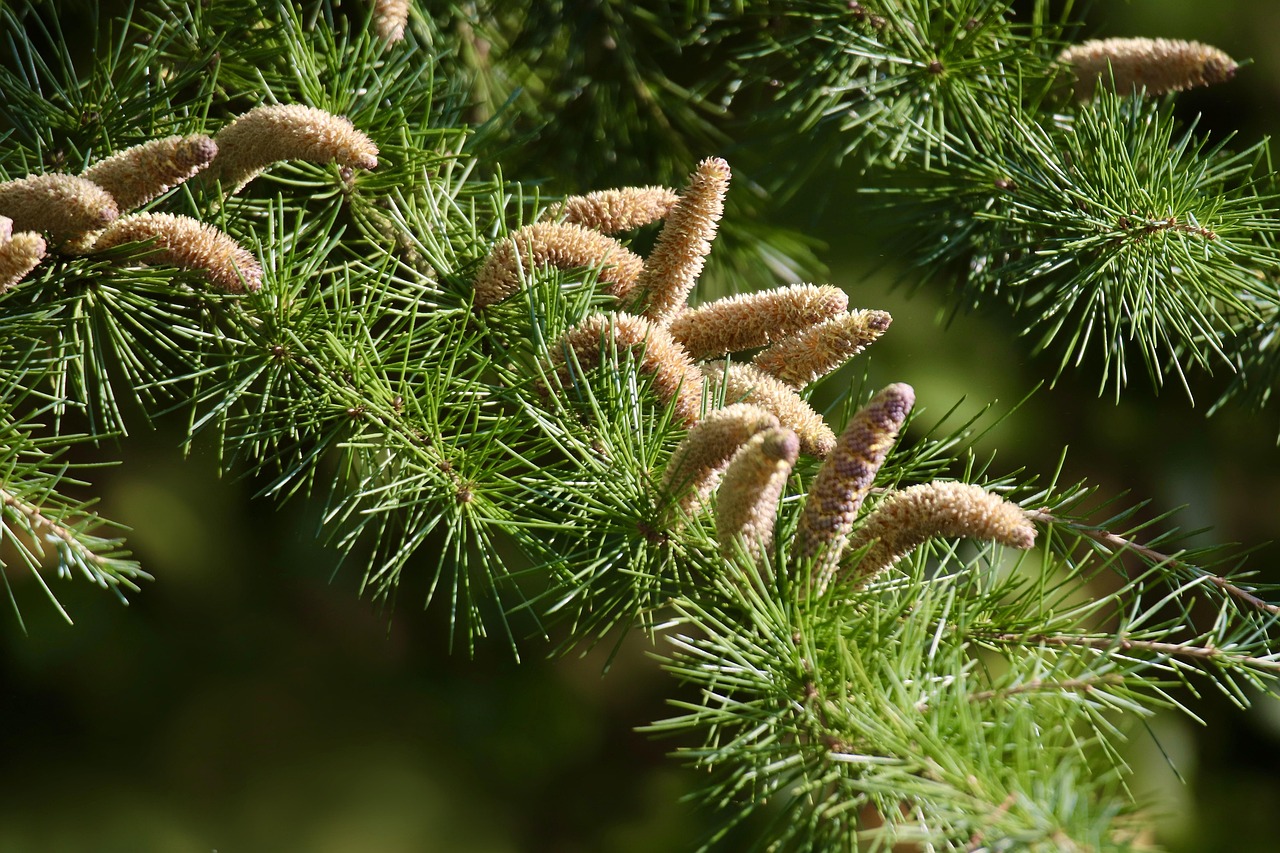Cedar pine hedges are a popular choice for gardeners looking to add beauty and privacy to their outdoor spaces. These hardy, evergreen plants not only provide a lush, green backdrop for your garden but also serve as a natural sound barrier and windbreak. With their dense foliage and pleasing aroma, cedar pine hedges can transform any garden into a serene retreat.
Originating from North America, cedar trees have been cherished for their durability and resistance to decay. The aromatic oils in their wood also deter pests, making them an excellent choice for garden borders and fencing. Over time, gardeners have recognized the many benefits of planting cedar pine hedges, including their low maintenance requirements and ability to thrive in various soil types. This article delves into the advantages of cedar pine hedges, their care, and how they can elevate your garden effortlessly.

| Feature | Description |
|---|---|
| Type | Evergreen |
| Height | Up to 30 feet (9 meters) |
| Width | 3 to 15 feet (1 to 4.5 meters) |
| Growth Rate | Moderate to fast |
| Soil Requirements | Well-drained soil |
| Light Requirements | Full sun to partial shade |
| Watering Needs | Moderate; drought-tolerant once established |
| Pest Resistance | High; naturally repels many pests |
The Advantages of Cedar Pine Hedges
Cedar pine hedges offer numerous advantages that make them a preferred choice among gardeners. Their robust nature allows them to withstand various weather conditions, from heavy snow to scorching heat. One significant advantage is their ability to provide privacy without obstructing sunlight. The dense foliage creates a natural barrier that shields your garden from prying eyes while still allowing light to filter through.
Visual Appeal and Aesthetic Value
The rich green color of cedar pine hedges enhances the visual appeal of any garden. They create a beautiful backdrop for other plants and flowers, making your outdoor space feel more complete and inviting. Moreover, their natural form can be maintained with minimal effort through regular trimming. This adaptability allows gardeners to shape their hedges according to personal preference, whether they desire a formal look or a more relaxed, natural appearance.
Environmental Benefits
Cedar pine hedges do more than beautify your garden; they also contribute positively to the environment. As evergreens, they provide year-round cover for birds and other wildlife. The dense foliage serves as a habitat, offering shelter from predators and harsh weather conditions. Additionally, these hedges play a role in air purification by absorbing carbon dioxide and releasing oxygen, making your garden not only more beautiful but also healthier.
Care and Maintenance of Cedar Pine Hedges
Caring for cedar pine hedges is relatively straightforward, making them an excellent choice for both novice and experienced gardeners. Proper care ensures that these plants thrive and continue to enhance your garden for years to come.
Watering Requirements
While cedar pine hedges are drought-resistant once established, they benefit from regular watering during their early growth stages. It is essential to keep the soil moist but not waterlogged. Deep watering encourages strong root development, which is vital for the hedge’s overall health.
Pruning Techniques
Pruning is an essential aspect of maintaining the shape and health of cedar pine hedges. Regular trimming helps promote new growth and maintains density. The best time to prune is during late winter or early spring before new growth begins. This timing ensures that the plants recover quickly and flourish throughout the growing season.
Fertilization and Soil Health
To ensure that your cedar pine hedges remain healthy and vibrant, regular fertilization is essential. While these plants are relatively low-maintenance, providing them with the right nutrients can significantly enhance their growth and appearance.
The best time to fertilize cedar pine hedges is in the spring when new growth begins. A balanced fertilizer that contains nitrogen, phosphorus, and potassium will help promote healthy foliage and root development. Consider the following options for fertilization:
- Granular Fertilizers: These slow-release fertilizers are easy to apply and provide nutrients over an extended period.
- Liquid Fertilizers: Quick-acting and easily absorbed, liquid fertilizers can be applied during the growing season for a quick nutrient boost.
- Organic Options: Compost or well-rotted manure can improve soil health while providing essential nutrients.
In addition to fertilization, maintaining healthy soil is crucial. Ensure that the soil is well-drained and rich in organic matter. Regularly adding compost can help improve soil structure and fertility, promoting optimal growth for your hedges.
Pest and Disease Management

Cedar pine hedges are generally resistant to many pests and diseases, but occasional issues can arise. Being proactive in managing these problems can help maintain the health of your plants.
Common Pests
While cedar pines are naturally pest-resistant, certain insects may occasionally pose a threat. Some common pests include:
- Cedar Bark Beetles: These beetles can damage the bark and weaken the tree. Early detection is key; look for signs of boreholes.
- Spider Mites: These tiny pests thrive in dry conditions. Look for webbing or yellowing leaves as signs of an infestation.
- Scale Insects: These insects attach themselves to the plant and suck sap, leading to overall decline. Regular inspections can help catch infestations early.
If you notice any signs of pest activity, consider using insecticidal soap or horticultural oil for treatment. Always follow label instructions carefully to minimize harm to beneficial insects.
Disease Prevention
Cedar pine hedges can also be susceptible to certain diseases, particularly if they are stressed or improperly cared for. Some common diseases include:
- Cedar Apple Rust: This fungal disease causes yellow-orange spots on leaves. Removing affected foliage can help prevent spread.
- Root Rot: Caused by overwatering or poorly drained soil, root rot leads to wilting and decline. Ensure proper drainage and avoid excessive moisture.
- Fungal Infections: Fungal infections can affect foliage and stems. Good air circulation and regular pruning help reduce humidity around the plants.
Regular monitoring of your cedar pine hedges will help you catch any issues early. Implementing proper care practices significantly reduces the risk of pest infestations and diseases.
Designing Your Garden with Cedar Pine Hedges

Cedar pine hedges are versatile plants that can be incorporated into various garden designs. Their ability to thrive in different environments allows for creative landscaping solutions. Here are some design ideas to inspire your garden planning:
Privacy Screens
Cedar pine hedges make excellent privacy screens, providing a natural barrier against noise and prying eyes. When planting for privacy, consider the following:
- Spacing: Plant hedges close together for a denser barrier. Aim for a spacing of 2 to 3 feet apart.
- Height: Select taller varieties if maximum height is desired for privacy.
- Layering: Combine with other shrubs or plants for added texture and visual interest.
Boundary Markers
Using cedar pine hedges as boundary markers can define your property lines while adding aesthetic appeal. Consider these tips:
- Consistent Height: Maintain a uniform height along the boundary to create a cohesive look.
- Curved Lines: Use curves instead of straight lines for a more natural appearance.
- Complementary Planting: Add flowering plants or ornamental grasses in front for a layered effect.
Garden Backdrops
Cedar pine hedges can serve as stunning backdrops for flower beds or seating areas. Here’s how to create an inviting space:
- Contrast Colors: Use brightly colored flowers against the green backdrop of the hedge for striking visual contrast.
- Seating Areas: Create cozy nooks with benches surrounded by hedges for privacy and tranquility.
- Seasonal Interest: Incorporate plants that bloom at different times for year-round beauty.
The adaptability of cedar pine hedges makes
Wildlife Habitat
In addition to their aesthetic benefits, cedar pine hedges can create important habitats for local wildlife. These plants support various species, enhancing biodiversity in your garden. Here are ways to maximize the wildlife-friendly aspects of cedar pine hedges:

- Bird Nesting: The dense foliage provides ideal nesting sites for birds. Include a variety of native plants nearby to attract different bird species.
- Pollinator Support: Incorporating flowering plants near the hedges can attract bees, butterflies, and other pollinators, enhancing the overall health of your garden.
- Natural Shelter: The hedges offer shelter for small mammals and insects, contributing to a balanced ecosystem.
By creating a wildlife-friendly environment, you not only enhance the beauty of your garden but also support local ecosystems. Observing the interactions between plants and wildlife can provide an enriching experience for garden enthusiasts.
Seasonal Care Tips
Cedar pine hedges require specific care throughout the seasons to ensure they remain healthy and vibrant. Understanding seasonal changes can help you provide appropriate maintenance at the right times.
Spring Care
Spring is a crucial time for cedar pine hedges as they emerge from dormancy. Here are some key tasks to perform:
- Fertilization: Apply a balanced fertilizer to support new growth and rejuvenate the plants.
- Pruning: Trim any dead or damaged branches to promote healthy growth.
- Watering: Ensure consistent moisture as new shoots develop. Monitor soil moisture levels closely during this period.
Summer Care
During the summer months, maintaining hydration is vital. Follow these care tips:
- Regular Watering: Water deeply but infrequently to encourage deep root growth. Mulching can help retain moisture.
- Pest Monitoring: Keep an eye out for pests. Early detection helps prevent infestations from becoming widespread.
- Weed Control: Regularly remove weeds that compete for nutrients and water around the hedges.
Autumn Care
As temperatures cool down in autumn, focus on preparing your cedar pine hedges for winter:
- Final Pruning: Conduct a light pruning to maintain shape and remove any weak growth before winter.
- Mulching: Add mulch around the base of the hedges to protect roots from freezing temperatures and retain moisture.
- Irrigation Check: Ensure that irrigation systems are functioning properly before winter sets in.
Winter Care
Cedar pine hedges require minimal maintenance in winter but still need attention:
- Snow Management: Gently remove heavy snow accumulation from branches to prevent breakage.
- Pest Inspection: Inspect for signs of pests or disease during milder winter days when you can access the garden.
- Protection from Frost: For young hedges, consider burlap wraps or other protective coverings if extreme cold is expected.
Cedar Pine Hedge Varieties
Selecting the right variety of cedar pine hedge is essential based on your garden’s specific needs and conditions. Different varieties offer unique characteristics that can enhance your landscape. Below are some popular options:
Eastern Red Cedar (Juniperus virginiana)
This resilient variety is known for its beautiful blue-green foliage and adaptability. It can grow up to 40 feet tall and is excellent for privacy screens and windbreaks.
Western Red Cedar (Thuja plicata)
The Western red cedar is prized for its fragrant wood and lush, green foliage. It grows quickly and can reach heights of 50 to 70 feet, making it ideal for larger landscapes.
Cryptomeria (Cryptomeria japonica)
This Japanese cedar is appreciated for its unique, feathery foliage and attractive bark. It grows well in various conditions and provides a soft, elegant look in gardens.
Selecting the right variety will depend on factors such as height preferences, climate suitability, and desired visual effects. Always consider local growing conditions when choosing a cedar pine hedge variety for your garden.
Installing Cedar Pine Hedges
The installation process of cedar pine hedges is crucial to ensure their success and longevity. Proper planning and execution will lead to a thriving hedge. Here are steps to consider when installing cedar pine hedges:
Site Selection
Select a suitable location that receives adequate sunlight. Cedar pine hedges thrive in full sun to partial shade. Additionally, ensure that there is enough space for the plants to grow without overcrowding.
Soil Preparation
Before planting, prepare the soil by testing its pH and
Soil Preparation
Before planting, prepare the soil by testing its pH and nutrient levels. Cedar pine hedges prefer slightly acidic to neutral soil, ideally with a pH of 6.0 to 7.0. If necessary, amend the soil with organic materials such as compost or peat moss to improve its texture and fertility. Loosen the soil at least 12 inches deep to allow for proper root development.
Planting Process
Once the site is selected and the soil is prepared, follow these steps for planting:
- Digging Holes: Dig holes that are about twice the width of the root ball and equally deep. Space the holes according to the desired density of the hedge. A common recommendation is to plant them 2 to 4 feet apart, depending on the variety.
- Positioning the Plants: Remove the cedar pine from its container and gently loosen any tightly bound roots. Place the plant in the hole, ensuring that the top of the root ball is level with or slightly above the surrounding soil.
- Backfilling: Fill in around the root ball with soil, pressing gently to remove air pockets. Water thoroughly to help settle the soil around the roots.
- Mulching: Apply a 2- to 3-inch layer of mulch around the base of each plant. This helps retain moisture, suppress weeds, and regulate soil temperature.
Watering After Planting
Immediately after planting, water each hedge thoroughly. For the first few weeks, keep the soil consistently moist but not soggy. As the plants establish their roots, gradually reduce watering frequency. Monitor for signs of stress, such as wilting or yellowing leaves, and adjust accordingly.
Enhancing Your Garden’s Aesthetics
Cedar pine hedges can be more than just functional; they can also serve as a focal point in your landscape design. Here are some creative ways to enhance your garden’s aesthetics with these hedges:
Incorporating Color
While cedar pines offer a rich green backdrop, incorporating colorful flowering plants or ornamental grasses can create stunning contrasts. Consider planting:
- Perennials: Plants such as daylilies, coneflowers, and black-eyed Susans can provide vibrant colors throughout the growing season.
- Annuals: Add seasonal annuals like petunias or marigolds for bursts of color that change year after year.
- Ornamental Grasses: Grasses like feather reed grass or blue fescue add texture and movement to your landscape.
Pathways and Borders
Cedar pine hedges can effectively frame pathways or garden borders, guiding visitors through your space. Consider these ideas:
- Curved Pathways: Use hedges to outline curved pathways that create a sense of flow in your garden.
- Entrance Features: Create archways or gateways flanked by cedar pine hedges for an inviting entrance to your garden.
- Raised Beds: Enhance raised garden beds with cedar pines along the edges to create a lush enclosure.
Conclusion
Cedar pine hedges are an exceptional addition to any garden, offering numerous benefits such as privacy, aesthetic appeal, and environmental support. Their low maintenance requirements make them suitable for both novice and experienced gardeners alike. By understanding their care and installation requirements, you can create a stunning landscape that enhances your outdoor space while supporting local wildlife.
Whether you are looking for a natural barrier, a backdrop for your favorite flowers, or a way to define your property lines, cedar pine hedges provide versatility and beauty. With proper planning, care, and creativity, these evergreen plants can transform your garden effortlessly into a picturesque haven that thrives through every season.
